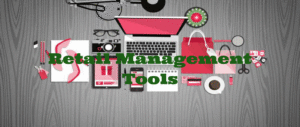As automation continues to play an increasingly dominant role in business operations, customer relationship automation has come to occupy a central place in marketing, sales, and customer service.
The customer relationship management software market, valued at $23.14 billion in 2015, will reach $81.9 billion by 2025, Grand View Research projects. Operational efficiency, lowered marketing costs and the ability to deliver mobile sales on the go are helping drive the demand for CRM solutions. Companies deploying CRM are seeing better customer acquisition and retention, improved sales efficiency and increased revenue.
To keep up with competitors already using customer relationship automation solutions, it’s vital to start getting up to speed on this technology now. Here’s a guide to how you can use customer relationship automation technology to improve your efficiency at generating leads, converting leads into sales and delivering effective customer service.
Marketing Automation
Marketing automation forms a foundation for efficient customer relationship automation. It enables you to gather marketing intelligence by tracking customer behavior across multiple media. It then empowers you to use this information to deliver personalized content to prospects. It also improves efficiency by automating your marketing workflow, assisting with processes such as scheduling content campaigns, managing digital content and publishing content.
To illustrate, let’s say you were using an ebook as a lead generator for targeted sales outreach to qualified prospects on your email list. To automate this, you could first define a segment of your email list to receive an automated invitation to download your ebook. You could follow this up with an automated email series that first sends thank you notes to people who downloaded your ebook, then follows up a few days later with a link to download a case study related to your book. When someone downloads your case study, one of your sales representatives gets an automated email to follow up.
G2 Crowd provides an overview of today’s leading marketing automation solutions. These include HubSpot, Marketo and Pardot.
Sales Automation
For optimal effectiveness, marketing automation should be integrated with sales automation. The workhorse of sales automation is customer relationship management software. CRM solutions enable you to automate such tasks as identifying hot prospects, deploying your sales force and tracking prospect interactions with sales representatives through each stage of the sales process.
While many companies are now using CRM, few are using it to its full capacity. Truly integrating CRM into your sales processes requires an understanding of how the software works, how it can be applied to your sales activities and how it can be used to personalize the sales process for individual customers. To assist companies with applying CRM more effectively, business solutions provider Customer FX offers Infor consulting services to train sales teams how to use the company’s Infor CRM sales solution in order to spot hot opportunities and engage customers.
Customer Service Automation
Customer service automation complements marketing and sales automation by helping turn sales into repeat business and referrals. Keeping customer satisfaction high is critical for customer retention. Customer service automation tools help you boost customer satisfaction by streamlining your workflow in order to reduce customer wait time and resolve customer issues more quickly and accurately. You can also use customer service automation to track and improve your service team’s performance.
A good example of customer service automation is interactive voice response (IVR) technology, which enables customers to use their voice or touchpad to access customer service phone menu options. This type of technology is sometimes deployed clumsily, but when used effectively, it can dramatically streamline service ticket management and boost customer satisfaction.
For example, IVR technology can be used to integrate a caller’s information with data about their previous interactions with a company in order to personalize the interaction and even predict what they might be calling about. This helps the IVR system more quickly present the customer with relevant menu options, reducing the amount of time it takes to resolve their issue. IVR can even be used to anticipate customer needs before they contact the company so that you can reach out proactively through automated tools such as pre-recorded notifications and reminders.








